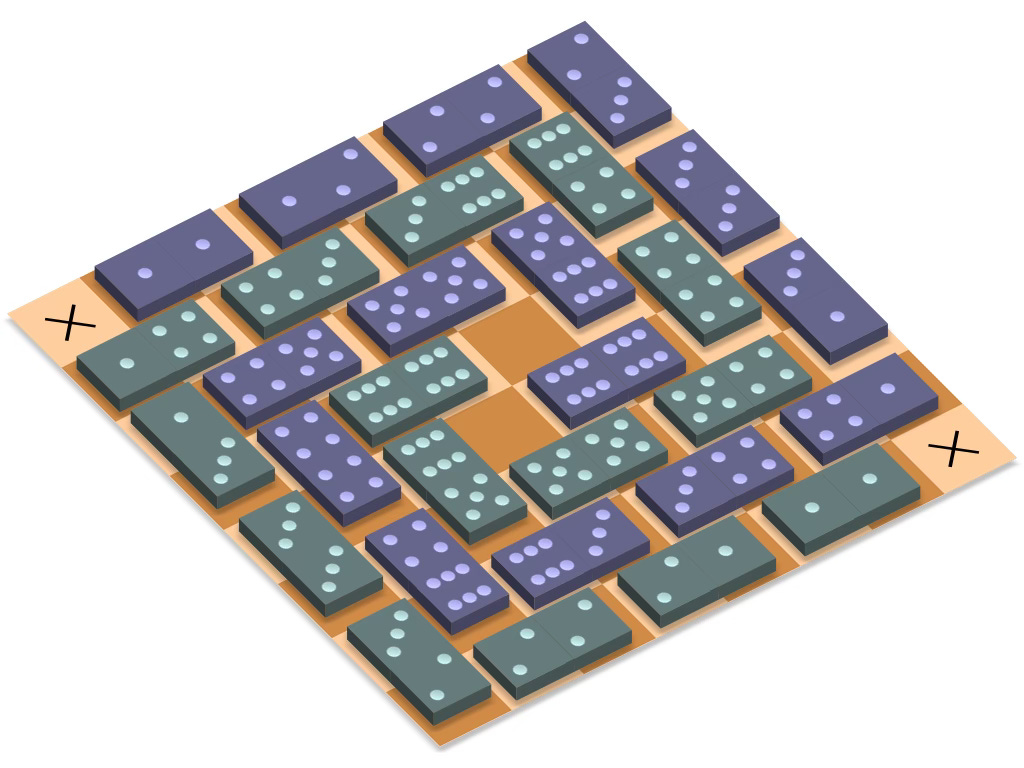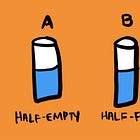The Mutilated Chessboard: When Math Beats Brute Force
How the Right Perspective Can Make Everything Obvious
This is The Curious Mind, by Álvaro Muñiz: a newsletter where you will learn about technical topics in an easy way, from decision-making to personal finance.
Imagine you're staring at a puzzle that seems like it should have a solution.
You've got all the right pieces, the numbers add up perfectly, yet something feels off. Today we'll explore a deceptively simple problem that perfectly demonstrates the power of lateral thinking—what mathematicians love to call a "happy idea."
This elegant puzzle comes from British philosopher Max Black, and it's about to show you how the right perspective can turn a seemingly impossible problem into child's play.
The Mutilated Chessboard Problem
Picture a standard 8×8 chessboard with two diagonally opposite corners removed.
Your mission: can you place exactly 31 dominoes (each covering 2x1 rectangles) to perfectly cover every remaining square?
Take a moment to visualize this. You've got 62 squares left to cover, and 31 dominoes that cover exactly 62 squares total. The math checks out perfectly—so this should be possible, right?
The Tempting Trap: Trial and Error
Your first instinct might be to grab some dominoes and start placing them. Go ahead—get a feel for the problem!
You'll quickly notice something frustrating: no matter how cleverly you arrange your pieces, you always seem to hit dead ends. Weird corners that can't be filled. Awkward gaps that frustrate your efforts.
But here's the thing about mathematical puzzles—sometimes the feeling that something's impossible is actually your brain picking up on a hidden pattern.
The question is: can we prove it's impossible without testing every single one of the billions of possible arrangements?
Searching for Restrictions
When facing a "Is it possible to...?" question where your gut says "probably not," mathematicians reach for a powerful tool: restrictions.
Let's check the obvious one first:
31 dominoes × 2 squares each = 62 squares covered
8×8 chessboard - 2 removed corners = 62 squares to cover
Perfect match! So the area restriction doesn't help us here—the numbers align perfectly.
But wait. There's something else about chessboards we haven't considered...
The Magic Brilliant Idea
Here's where lateral thinking comes in.
The puzzle almost gives us the key by mentioning it's a chessboard—not just any grid, but specifically a chessboard.
Chessboards have colours.
Those alternating black and white squares aren't just a decoration—they're the key to solving this puzzle. Here's the crucial insight:
Every domino, no matter how you place it, must cover exactly one black square and one white square.
Why is this relevant?
Let’s look at our original chessboard with two diagonally opposite corners removed:
It doesn’t matter which two diagonally opposite corners you remove, they’ll both have the same colour.
Let’s say we removed two white corners like in the picture above (the argument works identically if they’re black). We can now find the magic restriction:
Original chessboard: 32 black squares, 32 white squares.
After removing two white corners: 32 black squares, 30 white squares.
Now watch what happens as we place dominoes:
After domino 1: 31 black, 29 white remaining.
After domino 2: 30 black, 28 white remaining.
…
After domino 30: 2 black, 0 white remaining.
It’s impossible to place the 31st domino!
Why? Because every domino must cover one black and one white square, but you've run out of white squares while still having two black squares left uncovered.
The Beauty of Lateral Thinking
This solution is a masterclass in mathematical thinking.
Instead of getting trapped in the overwhelming task of checking every possible arrangement (there are countless billions), we found one simple property—colour parity—that makes the impossibility obvious.
We didn't need to prove the puzzle was impossible case by case, arrangement by arrangement. We found one elegant argument that rules them all out at once. A single, elegant observation led to a completely different angle that made the impossibility crystal clear.
The mutilated chessboard teaches us to trust that "something feels wrong" intuition and then search for the hidden reason why. When you're facing a problem that seems like it should work but doesn't feel right, remember to step sideways and look for the pattern everyone else is missing.








If only it was so easy to activate your lateral thinking...! Haha it's probably a great thing to practice 🤔